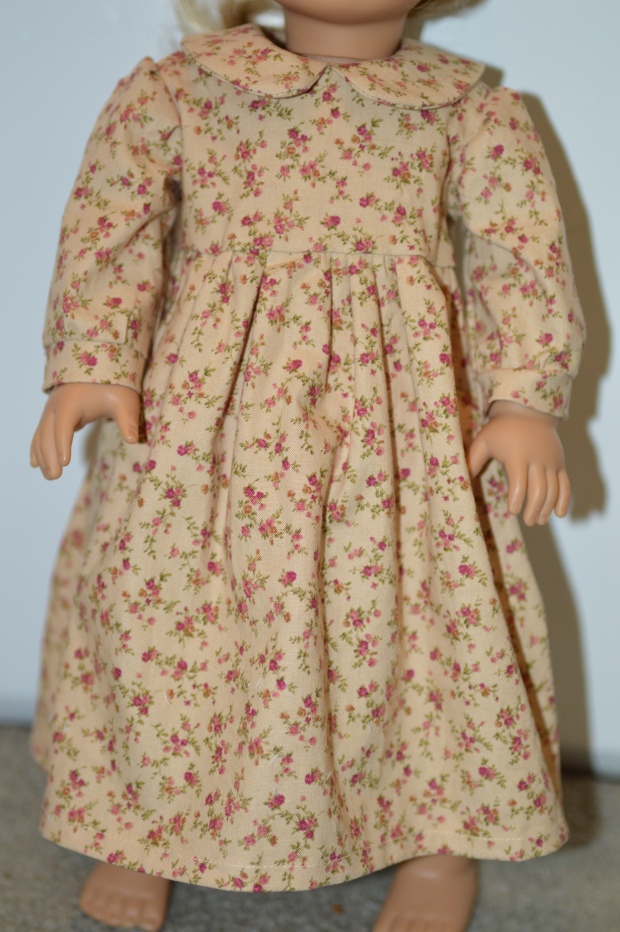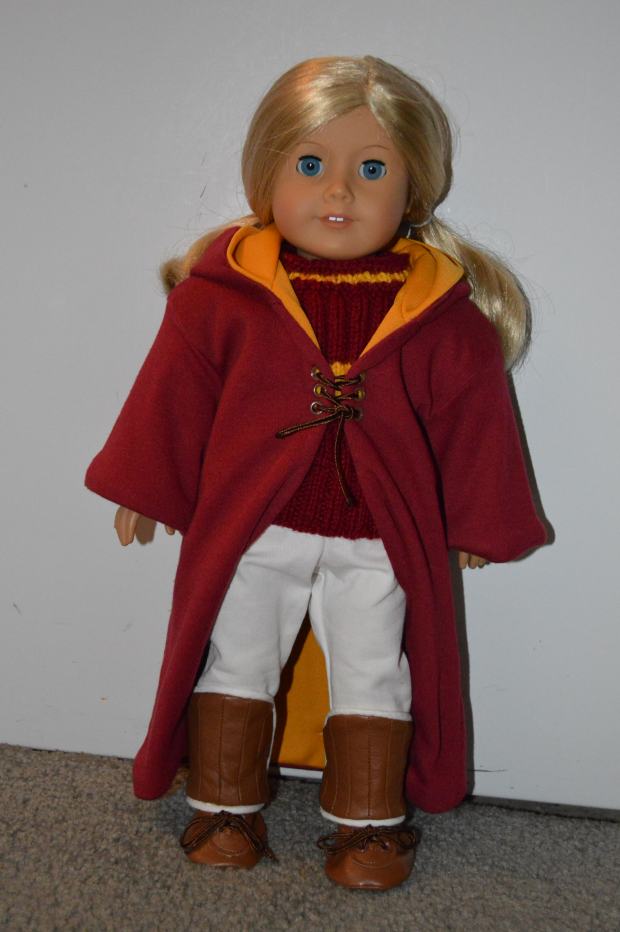 On Day 3 of our Quidditch uniform tutorials, we’re going to attempt shin guards for our Quidditch player. We’ll be modifying the same McCall’s 6904 pattern that we used for the shoes and socks.
On Day 3 of our Quidditch uniform tutorials, we’re going to attempt shin guards for our Quidditch player. We’ll be modifying the same McCall’s 6904 pattern that we used for the shoes and socks.
Materials needed:
- McCall’s 6904 view J
- brown synthetic leather (I used the same fabric and I used for the shoes)
- tan or cream fabric for the piping and back of the pads
- piping or string/yarn to make your own piping
- matching thread
- 3/4″ Velcro or elastic
If you want to keep things simple, you can follow the exact directions for making the shin guards. We’re going to add several steps to get them to look a little more like the ones in the movies.

We’ll need to make the pattern much wider than the original. It is almost 5.5″ wide. Here are the margins I drew:
From here it’s time to start sewing the individual panels on the shin guards. Start by folding right sides together and sew close to the folded edge.
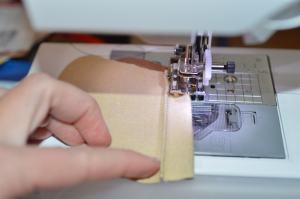
With right sides together, you’ll continue to sew creases into the fabric. Keep the spaces equidistant apart. My grooves were about half an inch apart, but I just eye-balled the spaces as I went.
When you finish sewing all the way across, it will look something like this:
If you don’t want to bother with piping and want to finish quickly, you can trim any jagged edges, stitch around the edge, attach elastic at this point and be done. The pattern has brief directions to help you here too.
If you want to be a little more polished, it’s time to add piping. If you’ve never worked with piping before, I highly recommend this tutorial from Polkadot Chair. Please read through that tutorial to help the next part make sense.
I didn’t have piping on hand, so I cut 1″ X 16″ strips of cream fabric on the bias and folded it over with braided yarn on the inside. Tan would be ideal to match the movie look and stand out against the pants.
Take your piping and sew it to the edge of your shin guard. You’ll need to cut the curved corners as you go.
I’m going to use leather strips with Velcro to attach the shin pads on my doll. You’ll need two 2″ X 1/2″ strips of leather and two 2.5″ X 1/2″ strips. You’ll be sewing these right sides together like you see in the picture. The longer strips go on the top.

Now you’ll be preparing and sewing the back side. First trace your shin guard onto your white/cream fabric. Leave a wide margin.
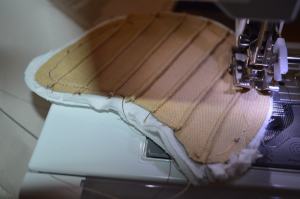
Put right sides together for a pretty thick sandwich. Sew it with the leather side on top. That way you can see the stitch lines from where you attached the piping. You’re going to sew right on that line. Leave a section open to turn the right side out.
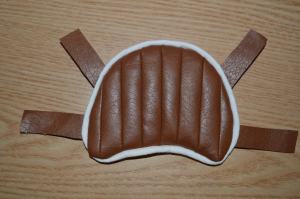
When you turn the right side out, it will look something like this:
Now attach Velcro to the straps. I cut a 1″ strip of the 3/4″ Velcro in half for a long skinny strip. Then sew them on the leather so that they can be attached to your doll.
There you go! Shin guards to keep your doll safe during her next Quidditch match! Next post will focus on knee pads.





















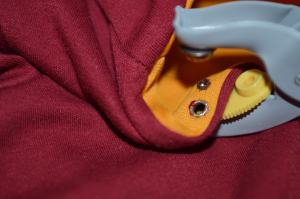 Once you finish your robe, we’ve got to add the eyelets and cord to make it look Quidditch ready. I use Drtiz’s Plier Kit that applies both snaps and eyelets. I bought it at Joann Fabrics last year. Unfortunately, I can’t find it on their website. It works fine for eyelets, but I’ve had trouble getting snaps to go on properly. If anyone knows of a great system/tool for eyelets, I’d love to hear about it. Mark your eyelets carefully before you apply them. It’s heartbreaking to misplace a hole after that time sewing.
Once you finish your robe, we’ve got to add the eyelets and cord to make it look Quidditch ready. I use Drtiz’s Plier Kit that applies both snaps and eyelets. I bought it at Joann Fabrics last year. Unfortunately, I can’t find it on their website. It works fine for eyelets, but I’ve had trouble getting snaps to go on properly. If anyone knows of a great system/tool for eyelets, I’d love to hear about it. Mark your eyelets carefully before you apply them. It’s heartbreaking to misplace a hole after that time sewing.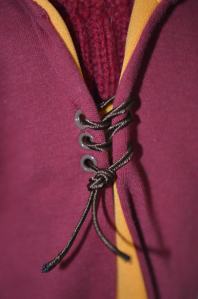
 That way it can be untied, but still stays attached and won’t go missing.
That way it can be untied, but still stays attached and won’t go missing.




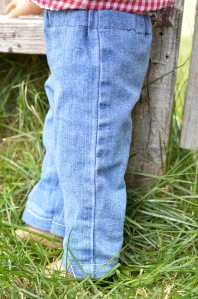


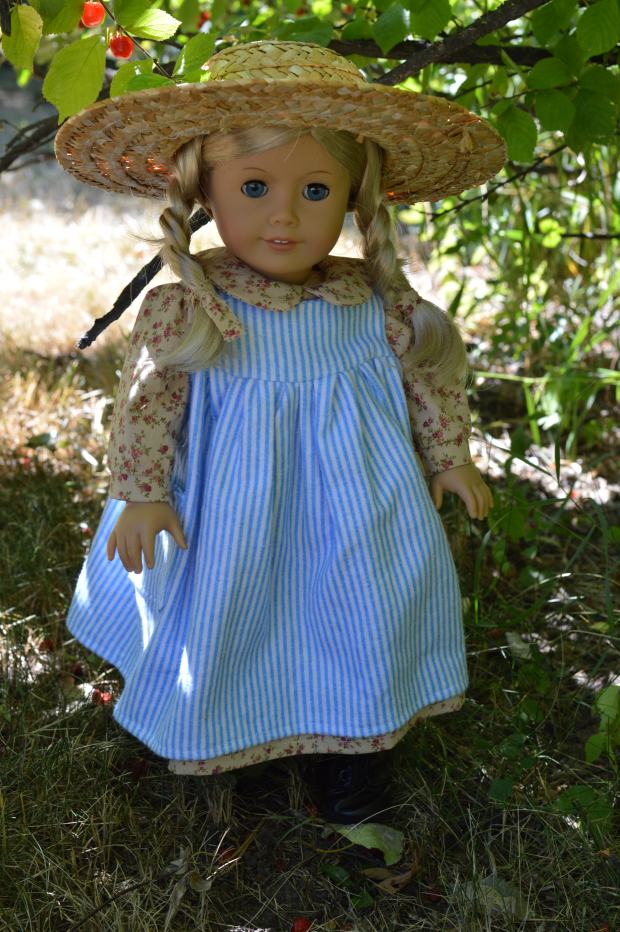
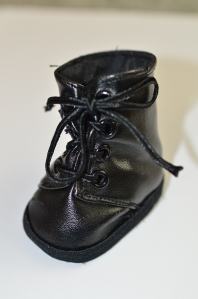


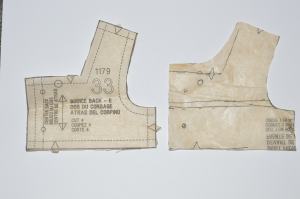 2) The bottom of the bodice is shortened. Using the same piece of tracing paper, I drew the line straight across and drew a second line for the seam allowance. We’re only going to make this modification to two of the four pieces from here. Why only two? More on that next…
2) The bottom of the bodice is shortened. Using the same piece of tracing paper, I drew the line straight across and drew a second line for the seam allowance. We’re only going to make this modification to two of the four pieces from here. Why only two? More on that next… Here are the four copies of Bodice Back #33 cut out. I decided to only modify the bottom of 2 of the 4 because I didn’t want to have trouble with the armhole when everything is sewn together. For the two I modified, I folded them up and pressed them before I cut.
Here are the four copies of Bodice Back #33 cut out. I decided to only modify the bottom of 2 of the 4 because I didn’t want to have trouble with the armhole when everything is sewn together. For the two I modified, I folded them up and pressed them before I cut.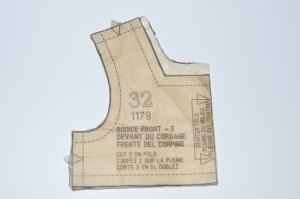

 Now it’s time to modify the bottom of one of the two Bodice Front pieces. Once again, we’re only going to modify the bottom of the outside piece, so that the facing can help to maintain the armhole shape. You can see the curve I wanted and the tracing lines on the bottom. I traced and ironed it before cutting out the curve on one of the bodice pieces.
Now it’s time to modify the bottom of one of the two Bodice Front pieces. Once again, we’re only going to modify the bottom of the outside piece, so that the facing can help to maintain the armhole shape. You can see the curve I wanted and the tracing lines on the bottom. I traced and ironed it before cutting out the curve on one of the bodice pieces.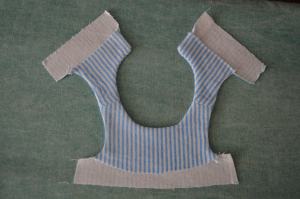

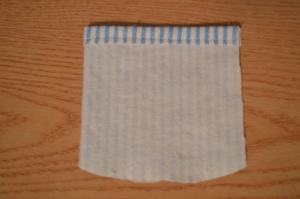 Finally, you need to add two patch pockets to Anne’s dress. There are lots of tutorials online if you’ve never made patch pockets before.
Finally, you need to add two patch pockets to Anne’s dress. There are lots of tutorials online if you’ve never made patch pockets before.

 Simplicity 1179 pattern view D is the base of the dress and pinafore. Unfortunately, the cute dress in this picture is just way too fancy for Anne’s orphanage dress. If you round the collar, simplify the sleeves and leave off the lace, you can have a decent little orphan dress. I also made the skirt a bit longer, so add about 3/4 inch to pattern piece #31 before you cut. Then you can hem the length exactly where you want it.
Simplicity 1179 pattern view D is the base of the dress and pinafore. Unfortunately, the cute dress in this picture is just way too fancy for Anne’s orphanage dress. If you round the collar, simplify the sleeves and leave off the lace, you can have a decent little orphan dress. I also made the skirt a bit longer, so add about 3/4 inch to pattern piece #31 before you cut. Then you can hem the length exactly where you want it. provided with the pattern, I used a rounded collar from McCall’s 7031 (Collar E #11) (nurse/candy striper dress). I just switched out the collars. The pieces matched up enough to work and get the look that you want.
provided with the pattern, I used a rounded collar from McCall’s 7031 (Collar E #11) (nurse/candy striper dress). I just switched out the collars. The pieces matched up enough to work and get the look that you want.